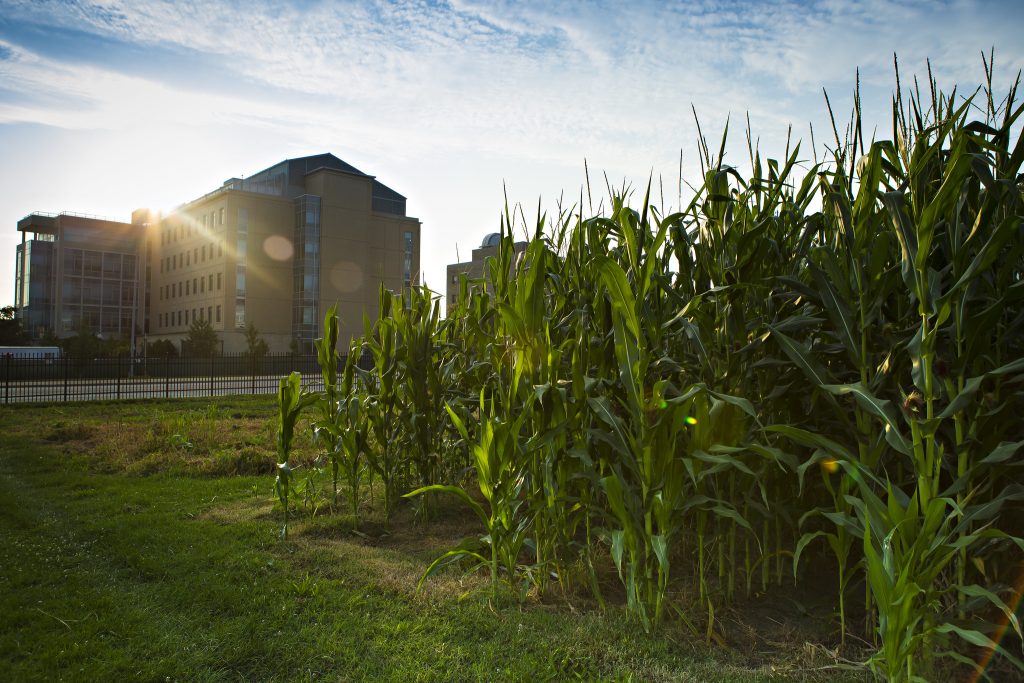
This story appears in our MU CAFNR/Agricultural Experiment Station Research Magazine.
When CAFNR unveiled its strategic plan, Drive to Distinction, in 2019, it established criteria for Programs of Distinction, a select collection of programs that exemplify CAFNR’s drive to distinction. Those programs, together with CAFNR’s academic programs, define CAFNR’s impact on Missouri’s agriculture and natural resource economies, providing understanding for how CAFNR is addressing challenges facing Missouri agriculture, food and natural resources.
There are seven programs that have earned Program of Distinction status (as of 2022):
- Food and Agricultural Policy Research Institute (FAPRI)
- Interdisciplinary Plant Group (IPG)
- Interdisciplinary Reproduction and Health Group (IRHG)
- MU Forage-Livestock Group
- MU Livestock Engineering Team (MULE Team)
- Show-Me-Select™ Replacement Heifer Program
- University of Missouri Center for Agroforestry
The Missouri Agricultural Experiment Station (MOAES) Research, Extension and Education Centers (REECs) have played and continue to play an important role in helping each program on its drive to distinction.
“The opportunities presented at our farms are critical for our Programs of Distinction to not only conduct unbiased research, but to share that research with our stakeholders,” said Shibu Jose, CAFNR associate dean for research and director of the MOAES. “Our researchers have their laboratories on campus. Our farms are the outdoor laboratories for our faculty, and each program depends on those farms for their continued success.”
The Programs of Distinction interact with the MOAES REECs and associated farms in multiple ways. For example, the Thompson Research Farm, located in Spickard, and part of the Northern Missouri REEC, played a major role in pioneering the Show-Me-Select™ Replacement Heifer Program. Thompson served as one of the first farms to implement the program, which has enrolled more than 135,000 heifers on more than 850 farms during its 20-plus years of existence.
“The first few years were incredibly busy because we were working with every veterinarian, on each farm, to get everyone calibrated and up and going,” said David Patterson, Chancellor’s Professor in the Division of Animal Sciences and pioneer of the Show-Me-Select™ Replacement Heifer Program. “It was so important to have a farm like Thompson really jump in to support what we were trying to do. [Former Farm Manager] Jon [Schreffler] was great to work with and was such a great leader for the herd at Thompson.”
Similarly, the Cornett Farm, located in Linneus, also part of the Northern Missouri REEC, served as an important foundation for the Missouri Grazing Schools, a tool that the MU Forage-Livestock Group has used to share its scientific discoveries in forage-livestock agriculture, as well as train farmers and producers in new grazing philosophies. The Horticulture and Agroforestry Research Farm, in New Franklin, part of the Central Missouri REEC, has helped the University of Missouri Center for Agroforestry become one of the world’s leading centers contributing to the science related to agroforestry. The farm allows the MU Center for Agroforestry to showcase the numerous integrated practices of agroforestry, in an effort to help protect the environment and improve biodiversity, while also sustaining land resources and production agriculture for future generations.
“It’s really great that we have an infrastructure in place to support our research enterprise,” Jose said. “The MOAES experimental farms have really helped make our faculty and our programs successful.”
Other Programs of Distinction, like the Interdisciplinary Plant Group; Interdisciplinary Reproduction and Health Group; and the MU Livestock Engineering Team, utilize various farms and laboratories in the MOAES REEC network to study animals and plants. The REECs allow the programs to conduct multiple projects, such as research related to animal genetics, plant stressors, or breeding efficiency in both animals and plants.
While the actual research is vital to the programs, sharing that information with the public is also incredibly important. The research farms in the MOAES allow for the programs to get research results to its stakeholders. For example, the Food and Agricultural Policy Research Institute uses various field days and workshops to put its experts in front of audiences throughout the state.
“Our field days and workshops at the MOAES are really important in allowing us to disseminate the data and research results we produce,” Jose said. “We strive to meet the needs of our stakeholders and we’re excited for the opportunities that our programs of distinction give us to do just that.”